When it comes to cookware, there are two brands that stand out above the rest: Staub and Le Creuset. Both offer high-quality cast iron skillets that are designed to last a lifetime and provide superior heat retention for even cooking. But which is better? In this comparison of Staub vs. Le Creuset skillet, we’ll explore the features of each brand in detail so you can decide which one is right for your kitchen needs. We’ll compare their design, construction materials, price points, and other important factors so you have all the information you need to make an informed decision about which cast iron skillet will best suit your culinary needs.
What Is A Staub?
Staub is a French cookware brand that was founded in 1974. It is known for its high-quality cast iron skillets, which feature an enameled finish that comes in multiple colors.
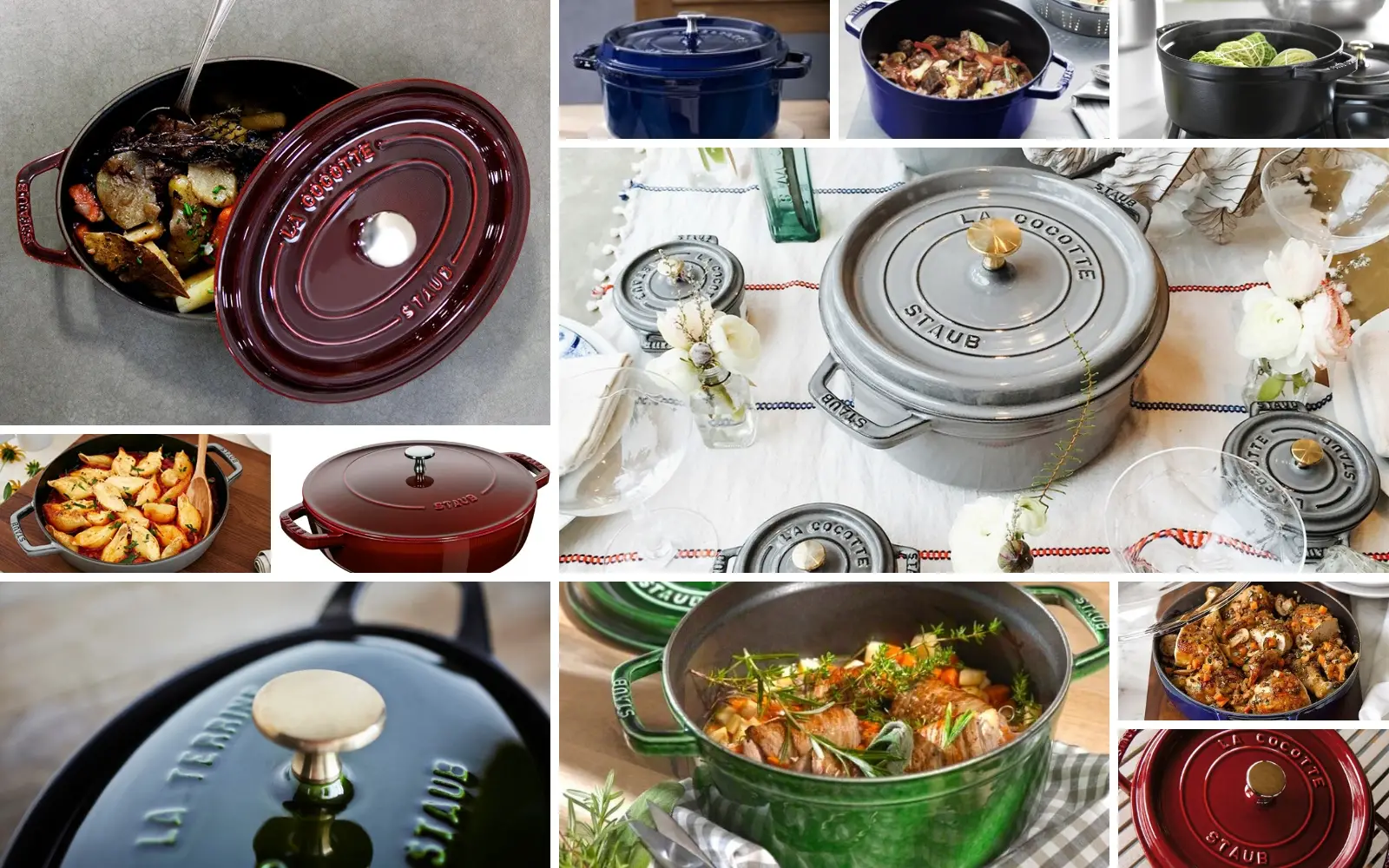
The enamel helps to resist stains and makes the skillet nonstick, so food won’t stick or burn to the surface as easily.
The heavy-duty construction of a Staub skillet also helps to distribute heat evenly across the surface for perfect cooking results.
What’s It Used For?
When it comes to cookware, Staub and Le Creuset offer two of the best skillets on the market. But before you try to decide which one is better for your kitchen arsenal, it’s important to consider how each skillet is designed to be used.Staub skillets are made with a heavy-duty cast iron body. They are designed to be perfect for slow cooking, braising, and simmering due to their even heat distribution and retention.
The enamel coating on the outside of the skillet helps protect the metal from rusting or corroding, while the black matte finish inside of each pan acts like a non-stick surface that requires less oil for cooking in order to prevent sticking.
Staub Pros
The Staub skillets come with their own unique set of advantages that make them a great choice for home cooks. Firstly, the cast iron construction of the Staub skillets means that they are incredibly durable and can withstand high temperatures without warping or cracking.
Additionally, they have an even cooking surface that ensures there is no hot or cold spot on your food. Furthermore, the enameled interior is non-stick and scratch resistant, meaning that any messes you create while cooking can be easily wiped away. [1]
Staub Cons
The cons of a Staub skillet are that it is quite heavy, and the cast iron construction can easily rust if not properly cared for. Additionally, the enamel finish may chip away over time, revealing the cast iron underneath. The high price tag associated with this brand also makes it difficult to justify purchasing one.
What Is A Le Creuset Skillet?
Le Creuset is a French cookware company established in 1925. The brand offers a range of products, including everything from pots and pans to bake ware and kitchen utensils. One of their most popular items is the Le Creuset Skillet, an enameled cast-iron skillet with two loop handles on either side.
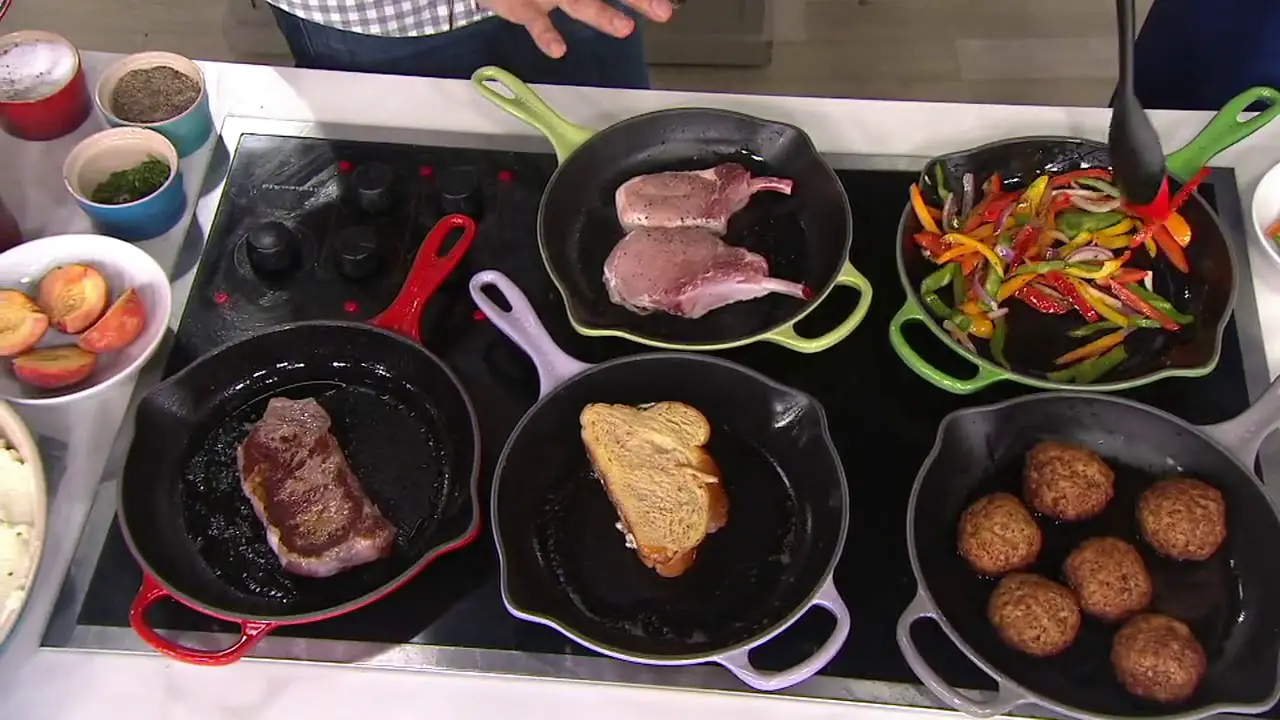
This piece of cookware is designed to be used on a variety of cooking surfaces, including gas and electric stoves, ceramic stove tops, and ovens. It provides superior heat distribution and retention due to its unique design and heavy-duty construction.
What’s It Used For?
Although Staub and Le Creuset both specialize in producing high-quality skillets, they have slightly different uses. Generally speaking, Le Creuset is more suitable for delicate tasks such as sauteing vegetables or pan frying fish due to its lower heat retention capabilities. This makes it ideal for searing meats or creating sauces without burning them.
On the other hand, Staub is better suited for slow-cooking foods such as stews or casseroles. Its excellent heat retention capabilities make it ideal for more long-term cooking tasks.
Additionally, both brands offer a variety of sizes and styles to suit any needs. [2]
Le Creuset Skillet Pros
The Le Creuset skillet is an iconic French cookware piece that has been around for decades. It is renowned for its durability and longevity, making it a great choice for cooks who want to invest in a quality skillet. Its enameled surface provides non-stick cooking without the need for oils or fats, and can easily be cleaned with warm soapy water. Le Creuset construction is also designed to provide even heat distribution throughout the pan, and its ergonomic handle makes it comfortable and easy to use.
Le Creuset Skillet Cons
One of the biggest cons of using a Le Creuset skillet is that it can be quite costly. The enameled cast-iron pans are more expensive than other types of skillets, and because they are so heavy and bulky, shipping costs can also add up. Another potential drawback is that the enamel coating on these skillets is prone to chipping, so special care must be taken when handling them.
Additionally, the seasoning and cleaning process for these skillets can be rather involved, requiring a lot of time and effort to maintain.
Differences Between Dutch Oven & Cocotte
The Staub and Le Creuset skillets are also known as Dutch ovens or cocottes, though there are subtle differences. A Dutch oven is a large pot with a tight-fitting lid that is used for cooking on the stovetop or in an oven. The heavier material of this type of pot retains heat better than other pots, making it excellent for slow-cooking dishes like stew or braising.
A cocotte, on the other hand, is similar to a Dutch oven but typically made of lighter material and has sloped sides. Cocottes are best used with quickly cooked foods such as sautéing vegetables or searing meat. [3]
Interior Enamel Finish
Staub and Le Creuset both offer exceptional quality skillets with an interior enamel finish. Staub skillets have a matte black enamel finish that is non-porous, so it won’t absorb flavors or odors. The black finish also helps to diffuse heat evenly throughout the skillet for consistent cooking results every time.
Additionally, Staub skillets are scratch-resistant and won’t chip or flake. Le Creuset skillets come in a variety of colors, including blue, red, white, and orange. The interior enamel finish is smooth and non-porous, making it very easy to clean.
Like Staub’s skillet, Le Creuset’s is also scratch-resistant and won’t chip or flake.
Heat Resistance
Both Staub and Le Creuset skillets are made of cast iron, which is known for its heat-retention capabilities. But there are differences in design that impact how well each skillet is able to retain heat. Le Creuset skillets have a flat bottom and wide cooking surface that can evenly distribute heat throughout the entire skillet. Staub skillets, on the other hand, have a slightly domed cooking surface and an inner ring of dimples that keep oil close to the food being cooked.
These design features help to ensure that heat is evenly distributed throughout the entire skillet.
When it comes to heat resistance, both Staub and Le Creuset skillets are excellent choices for cooks who want to ensure that their food is cooked evenly and thoroughly.
Time To Heat
When it comes to heat transfer, both Staub and Le Creuset skillets excel. Both are designed with thick walls that take a bit of time to heat up, but once heated they can evenly distribute the heat across the entire surface for perfect searing or roasting. The enameled cast iron in the Staub skillet is especially good at retaining and transferring heat, whereas the Le Creuset is slightly lighter and has a thinner layer of iron which can lead to faster heating. [4]
Heat Distribution
Staub and Le Creuset skillets both feature cast iron construction, which is known for its excellent heat distribution. However, the Staub skillet has the added benefit of an enameled interior that helps to evenly distribute heat across its entire surface area. The result is a more consistent cooking experience with fewer hot spots and cold spots throughout the pan.
On the other hand, Le Creuset skillets do not have an enameled interior so their heat distribution can be less even across the entire surface area.
Handles
The handle is probably the most important difference between Staub and Le Creuset. The Staub skillet has a cast iron handle which is riveted, making it strong and secure. The Le Creuset skillet has a stainless steel handle which is not as strong or durable as the Staub handle. In addition, the Le Creuset handle gets hot quickly on the stovetop and can be difficult to grip when handling hot pots or pans.
Lids
When it comes to lids, Staub skillets are known for their well-fitting glass covers that lock in heat and moisture. In comparison, Le Creuset’s lids are made of stainless steel and provide a tight seal. However, the design is not as snug as the one on Staub skillets. [5]
Knob Heat Resistance
When it comes to knob heat resistance, Le Creuset skillets have the edge over Staub. The knobs of a Le Creuset skillet are made from stainless steel and are designed to withstand temperatures up to 500°F. This means that they can be used safely on the stovetop, in the oven or under the broiler without fear of melting or burning. On the other hand, Staub skillets have ceramic knobs that are not designed to withstand high temperatures and can melt if exposed to extended heat.
Weight
One key difference between Staub and Le Creuset skillets is weight. The Staub skillet weighs around 4.2 pounds, while the Le Creuset weighs in at 7.5 pounds. Obviously, this means that the Le Creuset skillet will require more effort to lift or move around than the lighter Staub cast iron skillet.
However, the heavier weight of the Le Creuset skillet also has its benefits. The extra heft helps to keep food from sticking to the skillet and it retains heat much better than a lighter skillet would.
Cleaning
When considering which skillet is better, cleaning should also be taken into account. The Staub skillets are oven-safe, so you can just pop them in the dishwasher and let it do all the work for you. On the other hand, Le Creuset skillets need to be hand washed to keep their non-stick coating intact. Both brands offer skillets with enameled coatings, which can be washed in the dishwasher.
However, Le Creuset skillets are not as durable and may require extra care when cleaning. [6]
FAQ
What cookware is better than Le Creuset?
It depends on your cooking needs. For searing and great heat retention, Staub is a great option as it has excellent thermal properties that keep the heat in for a longer period of time. It also comes with a lifetime warranty and is less expensive than Le Creuset. On the other hand, if you are looking for a more versatile cookware that can work on most surfaces including induction, Le Creuset may be better suited to your needs due to its ability to work on multiple types of stovetops.
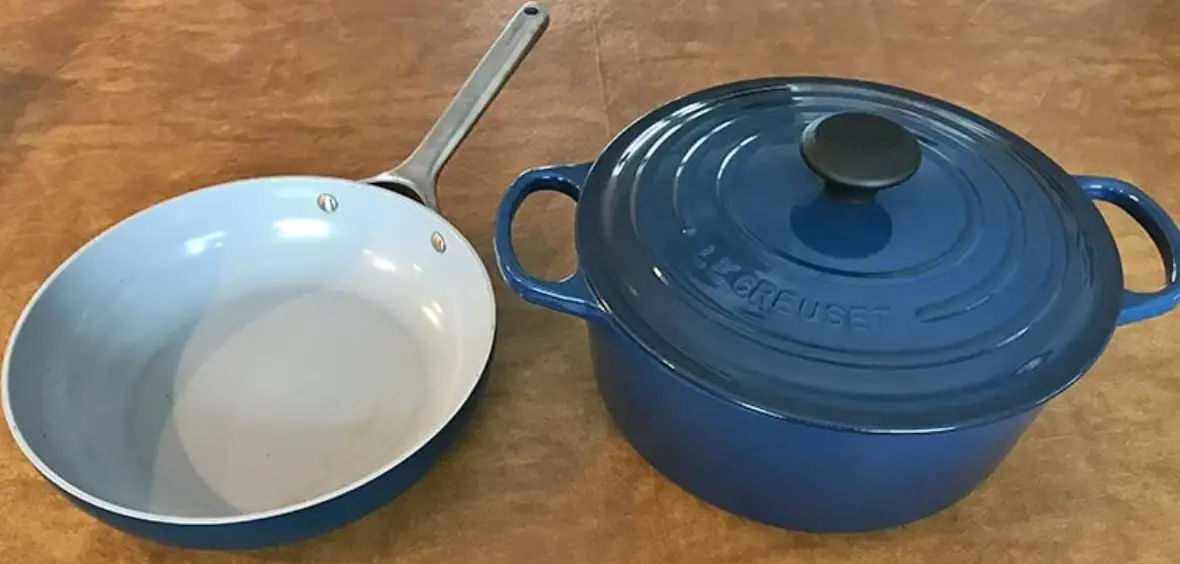
Also, Le Creuset is more lightweight and comes with a variety of sizes to choose from.
Which is heavier Staub or Le Creuset?
The weight of Staub and Le Creuset skillets vary depending on the size, but they are both typically quite heavy. Generally, Staub cast iron skillets weigh more than Le Creuset cast iron skillets because they are thicker. This may make them harder to maneuver when cooking, but it also makes them much better at retaining heat and makes them better for searing. Le Creuset skillets are designed to be lighter, but they still retain heat well and are a great choice for everyday cooking.
However, because of their lighter weight, they don’t hold heat quite as well as Staub skillets.
Is a Staub cast iron skillet worth it?
Staub cast iron skillets are well-regarded for their high quality, and as such, they come at a higher price point than the more budget-friendly Le Creuset options. But is it worth the extra money?
Ultimately, that’s up to you to decide based on what you need from your skillet. If you’re looking for a skillet that will last many years with minimal maintenance, then Staub is definitely worth considering. Their enameled cast iron pan comes pre-seasoned and requires no special cleaning or seasoning after use. It can also withstand high temperatures without degrading in quality like some other materials might.
Plus, its black matte finish gives this skillet a unique texture unlike any other cookware.
However, some people may find the higher price tag to be a deterrent.
It’s also very durable and easy to care for since it doesn’t require any special cleaning or seasoning after use. Plus, its vibrant colors add a fun pop of color to your kitchen decor.
Is cast iron better than Le Creuset?
The debate over the superiority of Staub cast-iron skillets versus Le Creuset has raged for years, with passionate devotees on both sides. Both brands have a long history of making quality kitchenware and offer many similar features in their products.
However, there are several differences that can make one more suitable than the other depending on what you’re looking for. When it comes to heat retention, Staub skillets take the lead.
They are made of thicker cast iron which helps them retain heat better than Le Creuset’s lighter skillets. This means that your food will continue cooking after you turn off the flame, making sure everything is cooked evenly throughout without any cold spots. As an added bonus, Staub skillets can be used on any type of stovetop – including induction cooktops.
What is the best alternative to Le Creuset?
When it comes to cookware, Le Creuset is one of the most popular brands on the market. But if you’re looking for something a bit different, Staub may be worth considering. While both brands offer quality products, there are some key differences that make Staub stand out from Le Creuset.
First and foremost, Staub skillets heat evenly and retain their temperature for longer periods of time than Le Creuset pans do. This makes cooking easier and more consistent, since you don’t have to worry about hot spots or uneven heat distribution like you might with a Le Creuset pan.
In addition to better heating capabilities, Staub skillets also boast superior craftsmanship. The enamel coating is thicker and more durable than that of a Le Creuset pan, which makes it less likely to chip or crack over time. This means you can enjoy your Staub skillet for many years to come without worrying about its appearance.
Finally, Staub skillets are generally less expensive than their Le Creuset counterparts, so if you’re looking for quality cookware at an affordable price point, then Staub may be the way to go.
What cookware do most chefs prefer?
When it comes to cookware, most professional chefs prefer the Staub vs. Le Creuset skillet. Both brands of skillets provide reliable and consistent performance, so it often comes down to personal preference. The Staub skillet is known for its enameled cast iron construction which provides superior heat distribution and retention, while the Le Creuset skillet offers a more modern look with its vibrant colors and varieties of materials used. In terms of design features, both brands offer impressive attributes that are sure to satisfy even the most discerning chef.
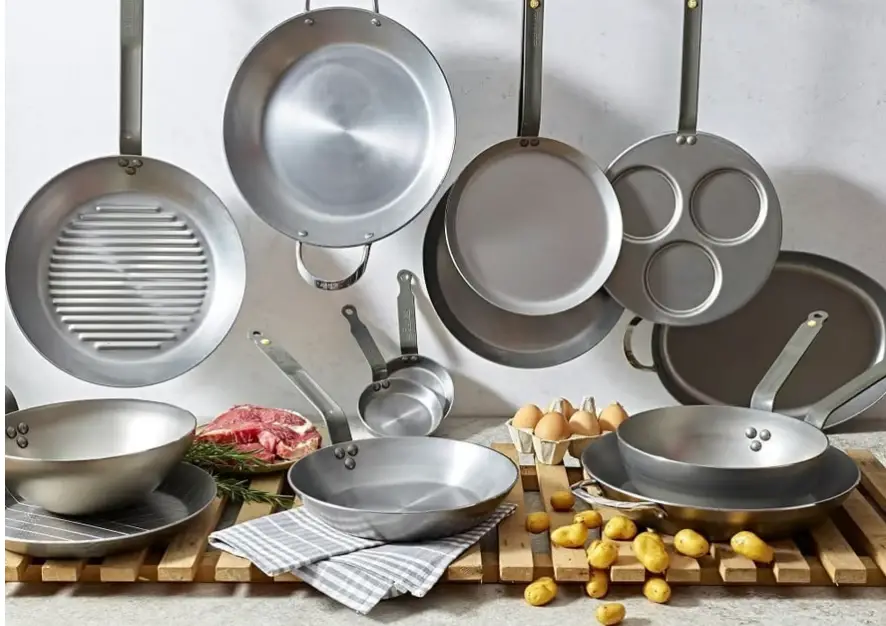
What is so special about Staub?
Staub is a brand of enameled cast iron cookware, made in France. The cast iron used in Staub cookware is particularly thick and heavy, which helps to retain heat more evenly than traditional cast iron skillets. The enamel coating on the surface of each skillet makes it easier to clean, as well as providing an attractive look that many cooks find appealing. It also prevents rusting and allows food to brown more quickly and evenly. The lid of each Staub skillet is designed with small spikes that help create condensation while cooking – this leads to juicier, more flavorful meals without much extra effort from you!
Additionally, Staub skillets are oven safe up to 500 degrees Fahrenheit, so you can bake in them as well.
Why is Staub and Le Creuset so expensive?
Staub and Le Creuset are renowned for their high-quality enameled cast iron cookware. Both brands use a process called ‘sand casting,’ which involves pouring molten metal into sand molds to create the skillet’s shape. The skillets must then be polished, cleaned, and coated with porcelain enamel (glass) before they are ready for use. This labor-intensive process is what makes Staub and Le Creuset skillets so expensive compared to other cookware on the market. The quality of Staub and Le Creuset skillets has made them popular choices among home cooks looking for an investment piece that will last a lifetime.
These skillets retain heat well, making them great for searing and frying. They are also non-stick, which makes them easy to clean.
Is Staub made in France or China?
The Staub brand is owned by Zwilling J.A. Henckels, a German-based company. The primary manufacturing facility for Staub products is located in France; however, they also have some products made in China. In terms of quality and craftsmanship, the French-made Staub skillets are generally considered to be superior to their Chinese counterparts. When comparing Staub vs Le Creuset skillets, it’s important to point out that while both brands offer high quality cookware, there are some distinct differences between them.
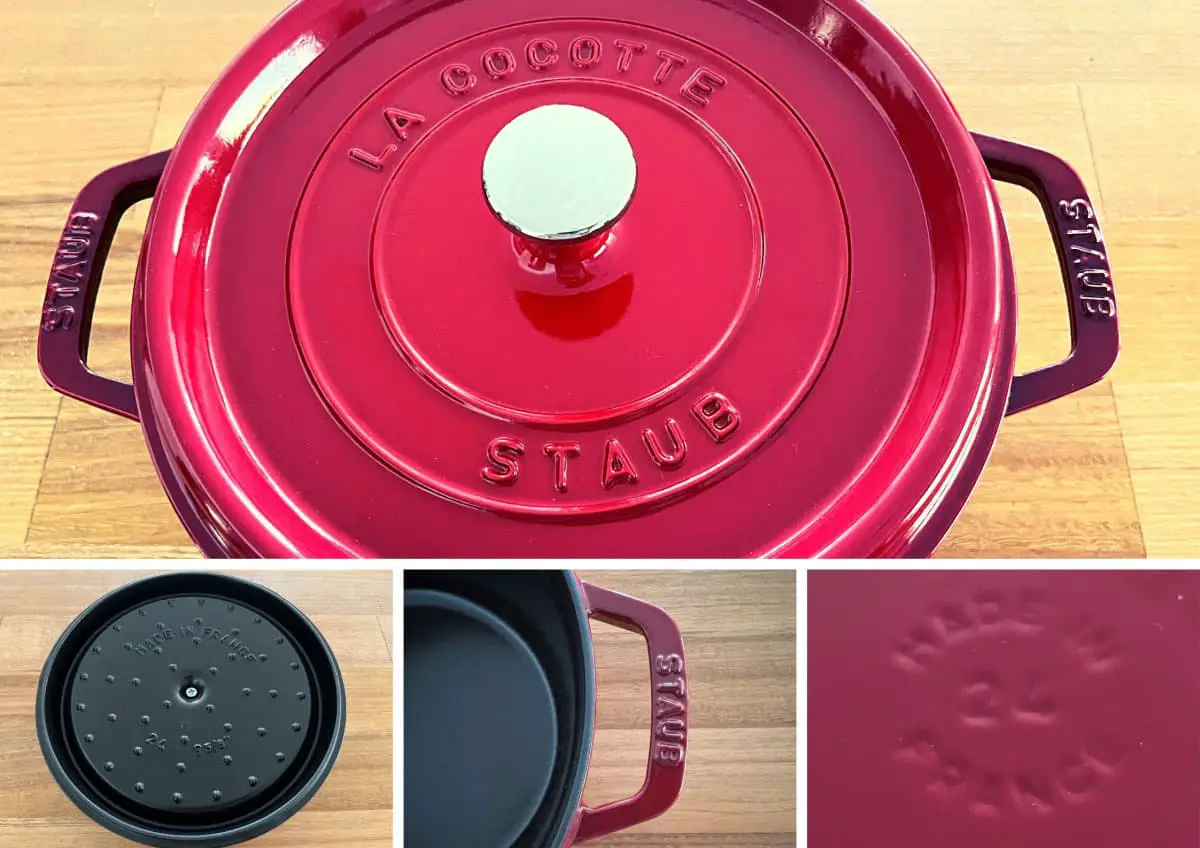
For example, Le Creuset skillets are typically made from enameled cast iron with a nonstick interior coating whereas Staub cast iron skillets are made with matte black enamel and come pre-seasoned.
In terms of performance, Staub skillets heat up evenly and retain their heat for longer periods of time than Le Creuset skillets.
This makes them an ideal choice for slow-cooking dishes like stews, soups, and braises.
Do chefs use Staub?
Yes, many chefs swear by Staub skillets and have found great success in using them in their restaurants. The cast iron construction of the Staub skillet ensures even heating and helps to achieve a much desired searing effect that is difficult to get with other forms of cookware.
Additionally, the black matte enameled interior coating makes it non-stick for easy cleanup. Many experienced cooks also prefer the Staub pans because they retain heat well and are very durable, making them ideal for use over extended periods of time. As such, Staub skillets have become immensely popular in professional kitchens all around the world.
Useful Video: Staub vs. Le Creuset Dutch Ovens: Test Results That Settle the Debate
Conclusion
When it comes to choosing between a Staub or Le Creuset skillet, the decision ultimately comes down to personal preference. Both of these high-quality skillets are constructed with durable materials and designed to last for years.
The Staub skillet is made from cast iron and offers superior heat retention and even cooking. The black matte enamel coating helps prevent sticking, while also adding style to your kitchen.
Le Creuset skillets feature a combination of stainless steel and carbon steel, which gives them superior strength and durability. They have an ergonomic stay-cool handle design that makes them easy to hold, as well as a glossy enamel finish that resists scratches and marks.
References
- https://www.thespruceeats.com/staub-vs-le-creuset-dutch-oven-7152355#:~:text=Winner%3A%20Staub&text=This%20results%20in%20more%20robust,back%20on%20top%20of%20food.
- https://www.homesandgardens.com/shopping/le-creuset-vs-staub
- https://ovenspot.com/staub-vs-le-creuset/
- https://www.gearpatrol.com/food/a427499/best-dutch-oven-brand-staub-le-creuset/
- https://www.gearpatrol.com/food/a427499/best-dutch-oven-brand-staub-le-creuset/
- https://kitchenambition.com/staub-vs-le-creuset/

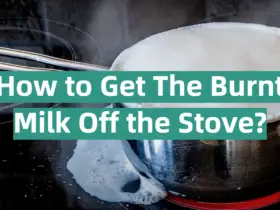
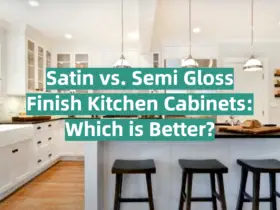
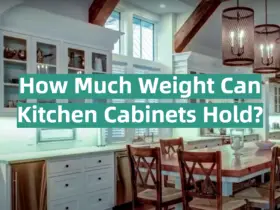
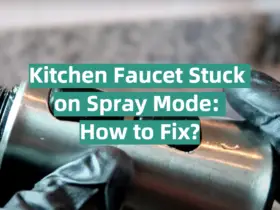
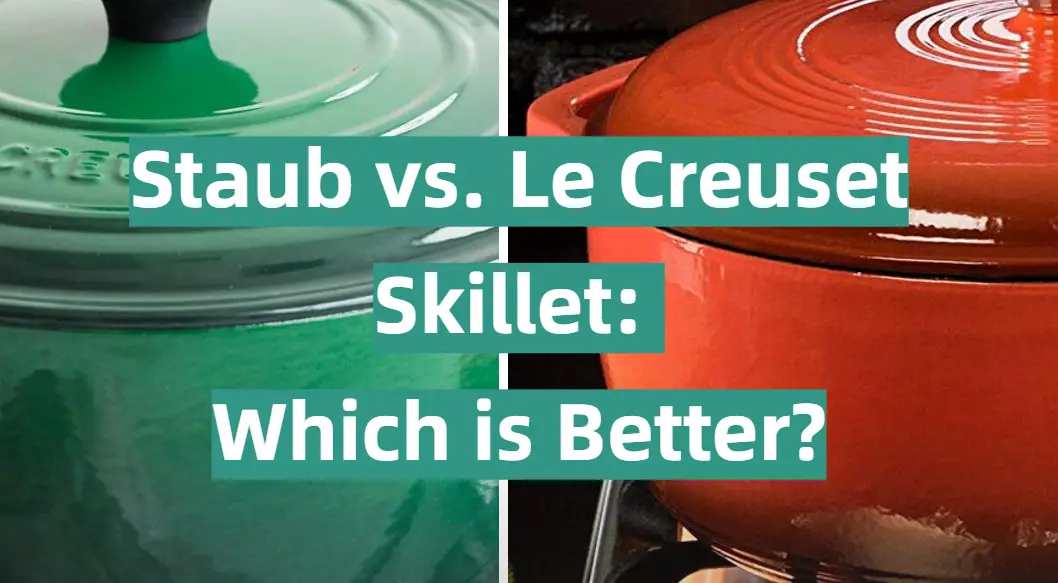
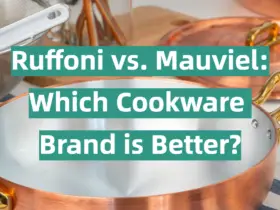
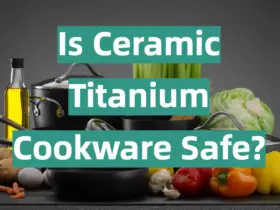
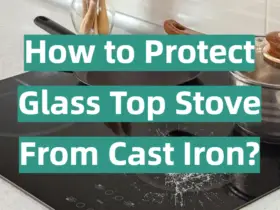

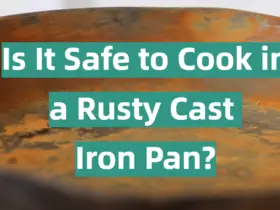
Leave a Reply